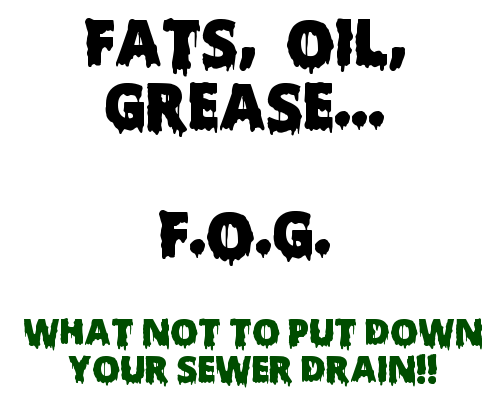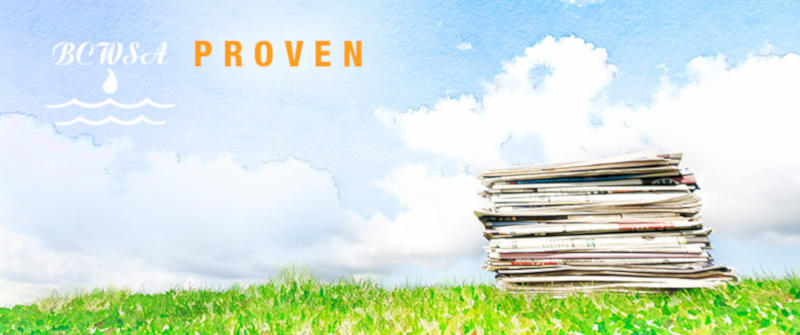Updated: April 24, 2015

Approximately 80% of grease related sewer blockages and overflows occur in residential areas.
FOG coats pipelines similar to the way fatty foods clog human arteries. The grease clings to the inside of the pipe, eventually building up and causing a complete blockage.
Grease Blockage Prevention
Preventing grease-related sewer blockages and overflows benefits your home, your pocketbook and the environment.
- Fat’s, Oil’s & Grease (FOG) should NEVER be poured down the sink. Sink drains and garbage disposals are not designed to properly handle these materials.
- Use sink strainers to catch food item, then empty the strainer into the trash.
- Before washing, scrape and dry wipe pots, pans, and dishes with paper towels and dispose of materials in the trash.
- Pour FOG after it has cooled into a container, such as an empty glass jar or coffee can. Once the container is full, secure the lid and place it into the trash.
- Don’t empty waste from a deep fryer down the drain. Allow the used oil to cool to room temperature and pour it into an empty bottle and put into the trash.
FATS
Fats typically come from meat and dairy sources but can also come from plant sources, such as nut butters. It is usually in a solid form at room temperature and can be thrown directly into the trash. Placing these foods in the garbage disposal only reduces the size of the food, not the likelihood of creating a clog. If you’re not sure if something has fat in it, check the nutrition label.
Examples:
- Meat Trimmings
- Uncooked Poultry Skin
- Cheeses
- Ice Cream
- Peanut Butter
- Butter
- Shortening/ Lard
OILS
Oil comes from plant sources such as vegetable oil, canola oil, olive oil, corn oil, etc. It may be used as a topping on food, such as salads or sandwiches or used to cook food, such a deep frying. It remains liquid at room temperature. Used oil should be poured into a can or jar before disposal. If it is poured down the drain, oil can coat pipes and get into any nooks and crannies, creating a slick surface that makes it easier for fats and grease to stick to.
Examples:
- Salad Dressing
- Cooking Oils: Vegetable Oil, Canola Oil, Olive Oil, Corn Oil
- Condiments
- Sauces
GREASE
Grease occurs when fats from food melt under heat such as frying, boiling and baking, etc. Grease is deceptive because it is a liquid after cooking, but eventually cools into a solid. Pouring it down the drain means that at some point it will cool on the pipes in the collection system, harden, and then start a clog.
Examples:
- Cooked/ Melted Fat from Meat, Bacon, Sausage, Duck, etc.
- Skin from Boiled Poultry
- Gravy
- Mayonnaise
